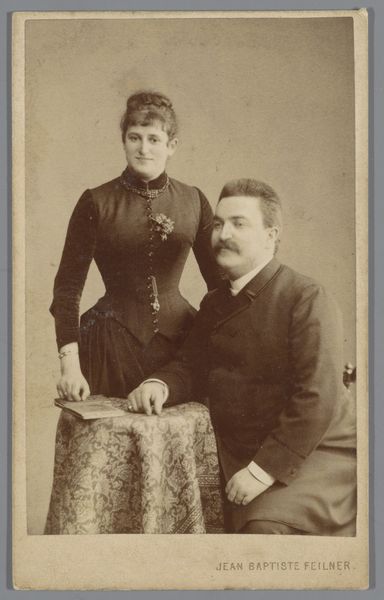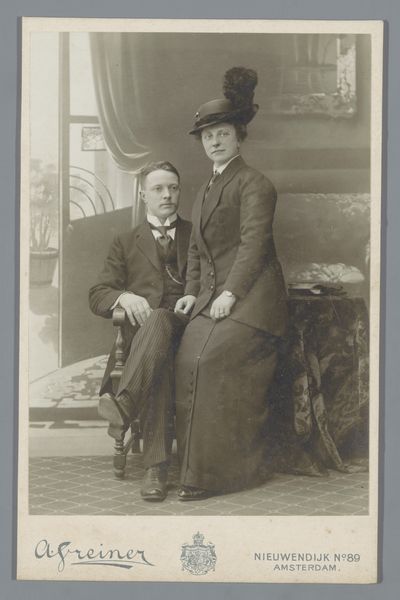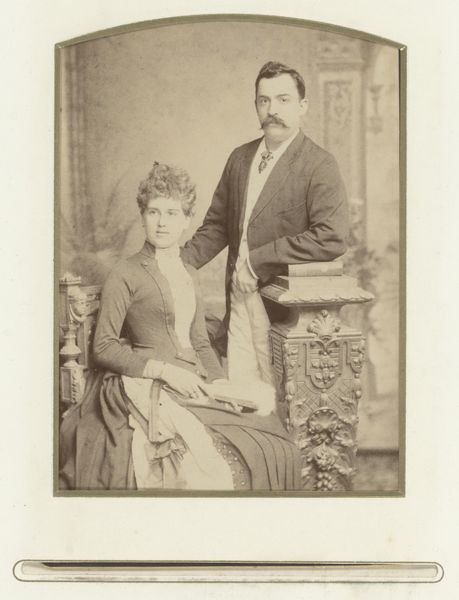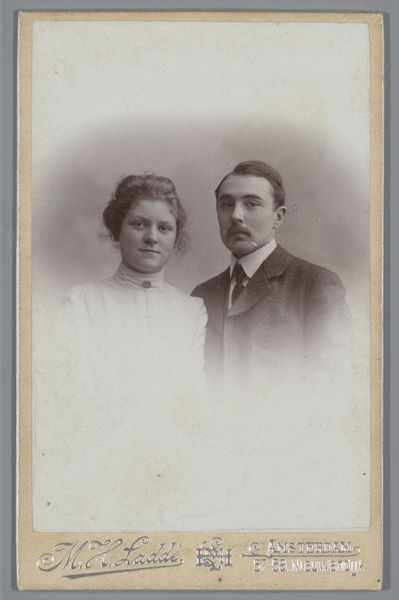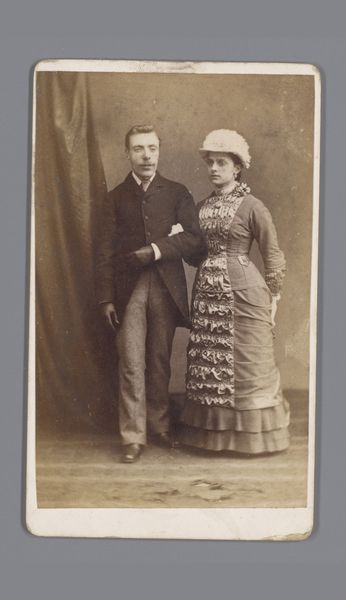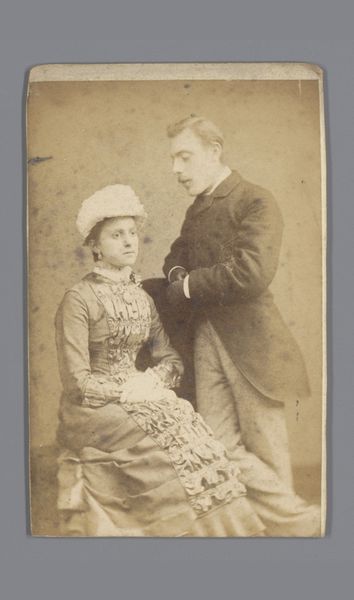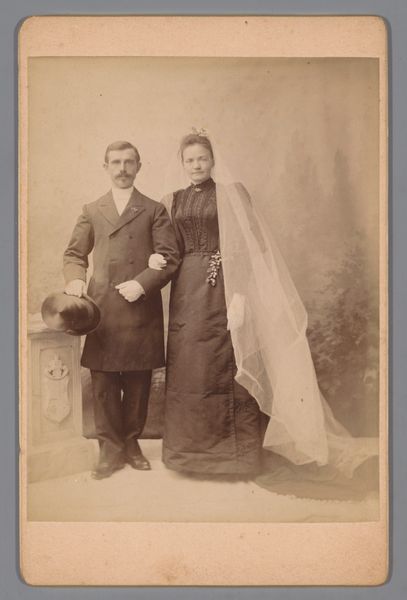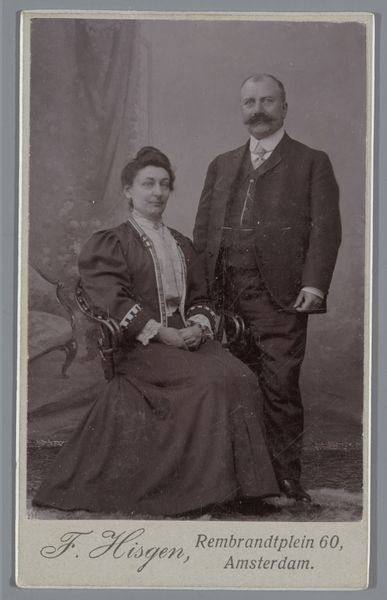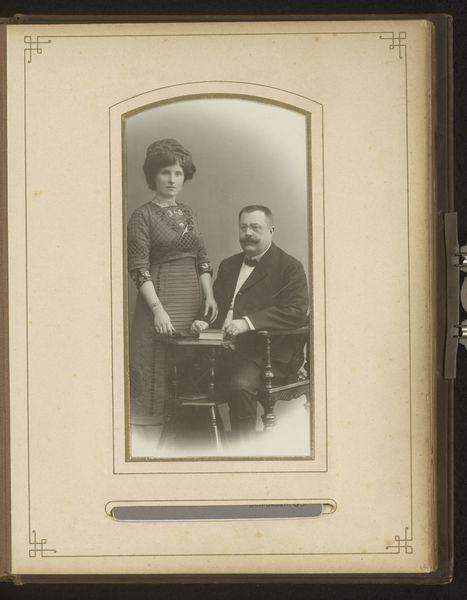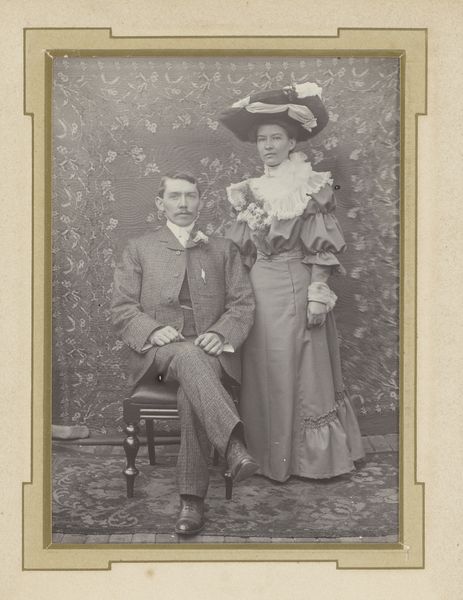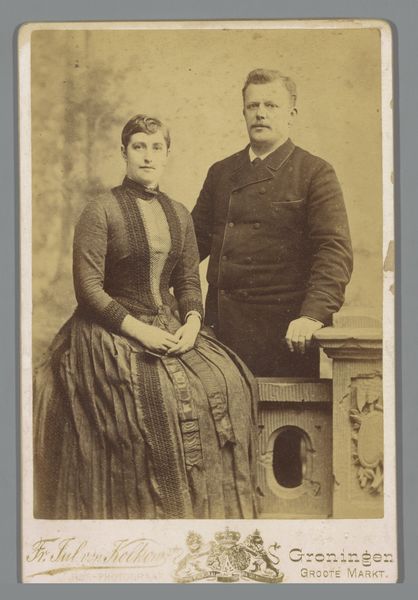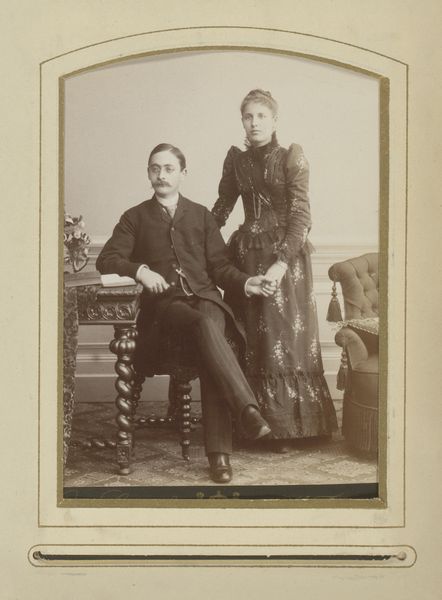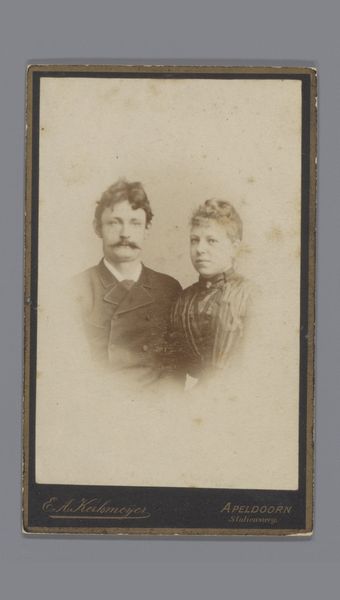
photography, gelatin-silver-print
#
portrait
#
photography
#
gelatin-silver-print
#
realism
Dimensions: height 137 mm, width 100 mm
Copyright: Rijks Museum: Open Domain
Berend Mulder made this cabinet card portrait of an unknown man and woman in Groningen, likely in the late 19th century. As photography became more accessible, studios like Mulder's democratized portraiture. Where painted portraits were once the domain of the wealthy, suddenly middle-class families could record their likeness for posterity. Note the constructed nature of the scene: the painted backdrop, the neoclassical balustrade. These stock elements speak to the aspirations of the sitters. They present themselves as respectable members of society, adhering to the fashion and conventions of their time. The woman's striped bodice and the man's tailored suit indicate a certain level of economic comfort. The image suggests the cultural values of the time: propriety, social standing, and the importance of family. Understanding this image requires that we consider both the history of photography as a medium and the social history of the Netherlands. Genealogists, historians of fashion, and scholars of visual culture can all find valuable information here. The meaning of this artwork lies not just in the image itself, but also in the context in which it was produced and consumed.
Comments
No comments
Be the first to comment and join the conversation on the ultimate creative platform.
